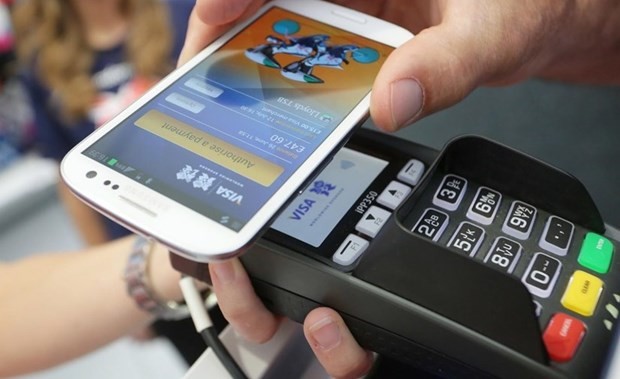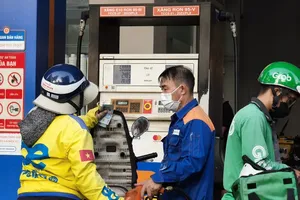 A type of cashless payment (Photo: VNA)
A type of cashless payment (Photo: VNA)
The pandemic accelerated this payment form towards a cashless society as oriented by the Government and the State Bank of Vietnam (SBV).
According to a survey recently conducted by digital payment giant VISA, 65 percent of Vietnamese are carrying less cash in their wallets and one-third say they will stop using cash after the pandemic. Almost 76 percent of the consumers now use mobile wallets and even more (82 percent ) use cards.
VISA also pointed out that online shopping and cash alternatives are all likely to stay on after the pandemic. Two-thirds of Vietnamese tried shopping online during the pandemic and half of them made their first purchase through social networks. Nine out of 10 consumers are now using home delivery services, and almost all of them now use it more often than before the pandemic.
An overwhelming majority (more than 80%) now use their cards, QR payments, and mobile wallets at least once a week. Meanwhile, a solid half of all Vietnamese have begun using cards more often, while 64% and 63% have increased their use of mobile contactless and mobile wallet payments, respectively.
“The impacts of the pandemic cannot be ignored – neither in the short term nor the long term. It has resulted in lasting changes in the ways consumers are choosing to make purchases and in how they pay. Success for merchants and businesses rests on their ability to evolve and transform with these changes,” said Dang Tuyet Dung, VISA country manager for Vietnam and Laos.
As of the end of 2021, 95 percent of all the financial institutions in Vietnam had been developing their own digitalisation strategy. Currently, over 80 banks offer customers e-banking services; 44 banks offer mobile banking services; and 45 fintech firms offer payment intermediary services. Across the country, there are currently over 90,000 stores that accept QR code payments and nearly 300,000 point-of-sale terminals.
























